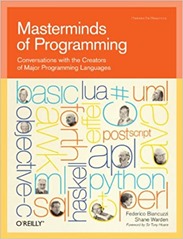 As of 5pm this afternoon I will no longer be working at GBG.
As of 5pm this afternoon I will no longer be working at GBG.
Since the pandemic leaving a company has been a subdued event with many slipping off into the night, scarcely noticed. This morning I had a final standup with the Data Science Team who shared the card everyone had written in and your gift.
I wanted to write down my thoughts on leaving, and to thank everyone for making my time at GBG – nearly 8 years – an enjoyable one.
I am not mentioning any names for reasons of my failing memory, and GDPR, a subject of which I have surprising knowledge – I first sat in GBG in the Compliance team which was at the time named differently and was rather more diverse in its members.
In my career I have been a university lecturer, a research scientist at Unilever, a data scientist at a start-up and finally a data scientist at GBG. I have been used to working in environments full of scientists. GBG represented quite a dramatic and refreshing change for me. I have enjoyed meeting and chatting to you all. It turns out I even enjoyed talking to potential customers – something I had not done before.
I have sat in the Chester office, in pretty much the same place, for my entire time at GBG with a slowly changing cast of characters. It was a spot where we could watch the world go by, occasionally seeing cars driving into the ornamental lake. When lockdown came we migrated to a Teams channel called “The Lonely Aisle”. My aisle mates hold a special place in my heart.
It will surprise many to learn that previously I have not been known for my collection of flamboyant suits, I think everyone will know what I am talking about here! I have always worked in environments which either didn’t have a company Christmas party or I didn’t attend. All I can say is that for one Christmas party my watch recorded 13 miles of dancing! I have illustrated this post with a collection of photos of me, in my suits, which feels a little odd but I have so few pictures of you.
I was given the Property Intelligence dataset to create on my first day in GBG by the Business Unit leader, and working on it will be the last thing I do as I leave. It was with some sadness I sent the email marking the end of the most recent build to the Product Manager.
The Dave’s from the Chester Production team have been a fixture throughout my time at GBG and I have enjoyed working with them all. “The Dave’s” does not count as revealing names since it is the law that members of the Production team are Dave even when they aren’t.
I would like to thank all my line managers at GBG, in retrospect I realise that I considered them “keepers” who had been assigned to me somewhat arbitrarily for bureaucratic reasons. I generally took what they considered to be directions as suggestions. This attitude may have led to some friction on occasion but I enjoyed our contractually required meetings.
It has long said on my blog that “[I work at] GBG where they pay me to do what I used to do for fun!”. I enjoy playing with data and computers, I have done since I was about 10. GBG actually paid me to attend meetings and do other things I did not enjoy. My play may not seem commercially relevant however it means I am in good position to address a wide range of urgent issues at short notice and I also made a bunch of interesting prototypes including voice input for address lookups, and the notorious Edited Electoral Roll in Elasticsearch experiment which probably marked my cards with Compliance – amongst many others.
It has only been in the last year or so that I have worked in a team of data scientist, prior to this I was a lone wolf or perhaps a rogue elephant. It was nice to work in a team where we could learn new things together.
I am not leaving voluntarily and the process of my departure has been stressful, for more than just me. I have been really touched by the support of my friends at GBG, and the wider Linkedin community, during this difficult time. If I can make one recommendation for those experiencing redundancy it is “Don’t suffer in silence”.
I go now to a better place! I know it is difficult to believe but it looks like I might actually be able to retire. I don’t think this is what I will do but I will take the summer off – the last before my son goes to high school. Then I will be looking for consulting style work. I welcome your thoughts on this, I’m not really prepared for retirement.
I am available on a wide range of social media platforms, so stop by and say hello.

